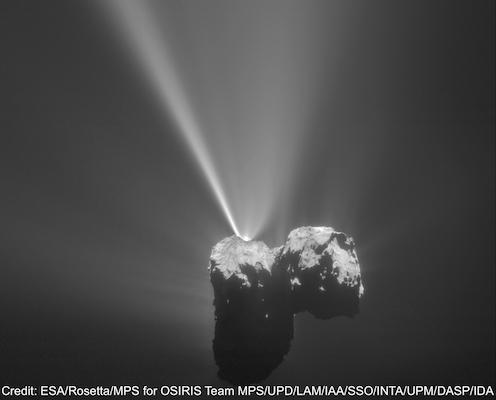Our own Solar System
What comets and asteroids can tell us about planet formation processes.

We study the smallest components of our own Solar System, comets and asteroids, as these are the left-over building blocks from the planet formation processes. We can make detailed measurements of their properties, including their composition and structure, to understand how and where they formed, and how they have evolved since. We do this by combining observations with telescopes around the world (and in space) with the results of space probes that visit these small worlds and return very detailed measurements.
Edinburgh researchers are involved in the European Space Agency (ESA) Rosetta mission to comet 67P/Churyumov-Gerasimenko, and lead efforts to send spacecraft to a newly identified population called the "main belt comets". We collaborate with partners across Europe in ESA missions, and also colleagues in other countries on missions with NASA (US), JAXA (Japan) and CAST (China). We are also involved in planning for remote observations of comets and asteroids with the James Webb Space Telescope (JWST) and the Euclid satellite.
On the ground we regularly use the UK's telescopes on La Palma and the European Southern Observatory's telescopes in Chile, including the Very Large Telescope, to study the properties of comets and asteroids. These include measurements of how comets evolve as they orbit the Sun, and studies of the slow processes driven by the tiny force of sunlight on asteroids. We recently also used these telescopes to study 'Oumuamua, the first comet to be discovered coming from another star. Finally, we are involved with preparations for analysing the data from the Large Synoptic Survey Telescope, currently under construction in Chile, which will find vast numbers of Solar System small bodies.

